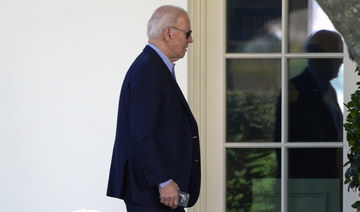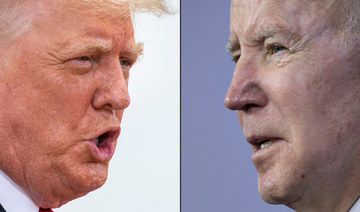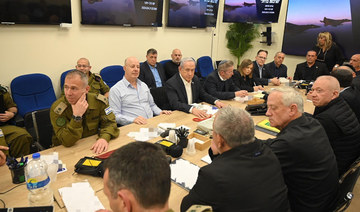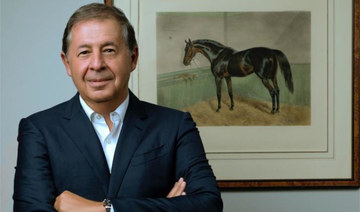TALUSTUSAN, Philippines: The American priest’s voice echoed over the phone line, his sharp Midwestern accent softened over the decades by a gentle Filipino lilt. On the other end, recording the call, was a young man battered by shame but anxious to get the priest to describe exactly what had happened in this little island village.
“I should have known better than trying to just have a life,” the priest said in the November 2018 call. “Happy days are gone. It’s all over.”
But, the young man later told the Associated Press, those days were happy only for the priest. They were years of misery for him, he said, and for the other boys who investigators say were sexually assaulted by Father Pius Hendricks.
His accusations ignited a scandal that would shake the village and reveal much about how allegations of sex crimes by priests are handled in one of the world’s most Catholic countries.
He was just 12 — a new altar boy from a family of tenant farmers anxious for the $1 or so he’d get for serving at Mass — when he says Hendricks first took him into the bathroom of Talustusan’s little rectory and sexually assaulted him.
“I asked why he was doing this to me,” the rail-thin 23-year-old said in an interview, the confusion still with him years later.
“’It’s a natural thing,’” he said the priest told him, “’It’s part of becoming an adult.’“
The abuse continued for more than three years, he says, but he told no one until a village outsider began asking questions about the American priest’s extravagant generosity with local boys, and until he feared his brother would be the next victim.
In November, he went to the police and told them what he knew.
Soon after, local authorities arrested Hendricks, 78, and charged him with child abuse. Since then, investigators say, about 20 boys and men, one as young as 7, have reported that the priest sexually abused them. Investigators say the allegations go back well over a decade — though many believe it goes back for generations, and could involve many dozens of boys — continuing until just weeks before the December arrest. Hendricks’ lawyers insist he is innocent.
The AP, which does not identify alleged victims of sexual assault, has met with five of the accusers.
Hendrick’s arrest was a sudden fall for a priest who had presided over this community for nearly four decades. He rebuilt Talustusan’s chapel and installed rooftop loudspeakers to summon parishioners to Mass. He pressed officials to pave the village road. He drove the sick to the hospital, and paid school fees for poor children. Many here will still tell you how much he did.
But the case also reflects much about the Philippines, a country where the church has long shrugged off the presence of its sex offenders and where the criminal justice system often ignores the problem.
“It’s a culture of coverup, a culture of silence, a culture of self-protection,” said the Rev. Shay Cullen, an Irish priest who has spent decades in the Philippines and works with victims of child sexual abuse. “It’s a silent consent to the abuse of children.”
In 2018, after the young man had gone to police — but before Hendricks had been arrested — he recorded a phone call with the clergyman.
In extracts of the conversation heard by the AP, Hendricks laments the passing of those happy days, and admits to an unspecified “mistake on my part.”
“Well, it’s true. I’m not saying it’s not. Did I say it’s not?” Hendricks said, his voice a combination of self-pity and resignation.
He said he’d probably have to retire.
“So I have to learn,” he continued. “I have to take the good with the bad.”
____
For nearly two decades, the Philippine church has vowed to confront a looming shadow of clergy abuse.
In 2002, the Philippines’ national conference of bishops ended years of silence to admit that the church faced “cases of grave sexual misconduct” among the clergy. One archbishop estimated that 200 of the country’s 7,000 priests may have committed some form of sexual impropriety. The bishops promised new rules that would “provide steps for profound renewal.”
But in a country home to more than 80 million Catholics and churches that date to the time of Shakespeare, such promises have long disappeared into a haze of tradition, piety and clerical influence that suffuses everything from sex education classes to national politics.
Until about 2013, for example, the church’s own guidelines insisted bishops did not need to report sexually abusive priests to police, saying they had “a relationship of trust analogous to that between father and son.” Media reports and legal action “adds to the pain” in cases of sexual abuse, Manila Cardinal Luis Tagle told the Catholic news site UCAN in 2012. In Asian cultures, he said, it is often better for such cases to be handled quietly, inside the church.
The church’s influence remains vast here, even as it has seen its power chipped away in recent years, weakened by the spread of evangelical missionaries and attacks by the nation’s populist president, Rodrigo Duterte.
Duterte, who says he was sexually abused by a priest while he was a student, has publicly derided bishops as “sons of bitches,” and urged Filipinos to stop going to Mass. Investigators say Duterte is closely watching the Hendricks case.
On Biliran, the poor island where Hendricks spent nearly half his life, his fondness for boys had been widely discussed for decades among villagers, local officials and, according to a former Catholic brother, members of the clergy. While many people had long believed he was a pedophile, almost nothing was said openly. Nor did anyone act on the suspicions.
That’s how it happens across the Philippines. Silence continues to shield priest after priest.
On the island of Bohol, the priest Joseph Skelton serves mass, more than 30 years after the then-seminarian was convicted of sexual misconduct with a 15-year-old boy. Local news reports reveal even more working clergyman: the priest outside Manila who recruited young men for the priesthood after admitting to sexually assaulting teenage boys; the priest who moved into a bishops’ residence after being accused of raping a 17-year-old girl; the composer of sacred music accused of sexually abusing boys as young as six.
Prosecutions of accused priests are exceedingly rare here, and convictions are rarer. “No priest in the Philippines has ever been convicted” of child sexual abuse, Bishop Buenaventura Famadico, who oversees a diocese south of Manila, told the Catholic newspaper La Croix last year.By comparison, the group BishopAccountability.org says that since 1990 more than 400 priests have been convicted in the US on child sexual abuse charges.
The 23-year-old from Talustusan said he might not have come forward without encouragement from an American visitor to the village, the boyfriend of a woman related to an accuser. The American was shocked at the gifts the priest had doled out to him and other local boys and began to ask probing questions.
“He kept asking why Father Pius was doing these things for boys in the village,” said the 23-year-old, who began wrestling then with his own feelings about what he should say.
“I thought this might be it, this might be the help I’m asking for, that my life will change,” he said. Finally, he told his family, and then local authorities, about the abuse.
Even then, the case may not have gone anywhere without intervention by the US Department of Homeland Security. The agency started its own probe of Hendricks under a statute that allows the US government to prosecute child sexual abuse by American citizens anywhere in the world.
The local case against the priest would have stalled if US authorities hadn’t started their inquiry, pressuring Philippine authorities to act, according to an investigator involved in the case, speaking on condition of anonymity because the investigation is still under way.
____
Kenneth Hendricks was born in 1941 in working-class Cincinnati, as the Great Depression was grinding to an end. His parents divorced when he was young, and Hendricks’ mother supported her two sons by cleaning houses.
By his late teens, Hendricks was interested in the Franciscans, the Catholic order of brothers and priests known for their long brown robes and centuries of work among the poor.
Hendricks became a Franciscan brother by his early 20s, taking the name Pius. His assignments ranged from the St. Catherine Indian School in Santa Fe, New Mexico to the then-rough Cincinnati neighborhood of Over-The-Rhine, where he helped run a youth boxing club.
His branch, the Province of St. John the Baptist, declined comment on his work, saying in a statement that it was “fully cooperating with the authorities.”
Residents say Hendricks was still a Franciscan when he found his way to Talustusan, a village of about 2,000 people a couple miles uphill from the coast. It was a quiet place with dirt roads, a small school and a time-worn chapel above the Anas River. He left the Franciscans around 1986 and soon after was ordained as a priest by the local diocese.
While Hendricks never learned to speak Bisaya, the primary local language, he seemed to love the village. He told his parishioners that he’d be buried one day in a storage room behind the chapel. “’Here is my tomb!’” he’d call out cheerfully, pointing to four concrete slabs set into the floor, near a battered statue of the Virgin Mary with broken hands and carefully manicured eyebrows.
But he never fit in fully. His quick temper and sharp tongue were intimidating. He chastised toddlers for not sitting at the front of the Talustusan chapel, and publicly berated adults who annoyed him. “Crazy Filipino people!” he would snap when he was frustrated.
Then there were the boys.
They stayed at Hendricks’ house, rode in his car and walked with him through Talustusan, residents say. He gave them gifts ranging from clothing to money to school fees.
“All of us knew about Pius and his boys,” said a former Catholic clergyman who worked with Hendricks for years, and who spoke on condition of anonymity, fearing retaliation from the church.
Once, at a gathering of priests and others, he said he erupted angrily at Hendricks, calling him a pedophile. That brought the clergyman a quick rebuke from church authorities who told him to keep quiet. Church officials declined to comment.
“All of them knew about Pius,” he said of church leaders on the island, the anger still in his voice years after the confrontation.
Similar comments are echoed in Talustusan, where there is no indication police or church authorities looked into the allegations.
“Ever since I was young I heard the stories, that he would touch altar boys,” said a longtime village resident, who also spoke on condition of anonymity, fearing backlash from her neighbors.
Even the local prosecutor barely blinked when the case was brought to her.
“I was not really surprised, because he was always with small boys,” said Edna Pitao-Honor. “We were friends, actually. But that ends when he’s facing prosecution.”
Yet the church has done little to reckon with its role in what investigators now say was years of his abuse.
The Rev. Romulo Espina, a top official in the Diocese of Naval, where Hendricks served, insisted neither he nor other diocesan leaders saw any signs of sexual mistreatment by the American.
But Espina, who worked regularly with Hendricks in a small cluster of offices behind the main regional cathedral, also quickly made clear that if Hendricks did anything wrong, the church bears no responsibility.
“If it is true, was he told to do it? No,” Espina said. “You cannot attach the behavior to the institution. It is the devil.”
Hendricks, Espina said, was told something similar.
“If there is a criminal case, we told him ‘This is your fight. You have to face the music.’“
___
Poverty is deeply rooted in Talustusan, where many people get by working on nearby coconut plantations or rice paddies. Others run informal gas stations, selling gasoline in old Pepsi bottles, or operate home groceries where they offer tiny bars of soap and packets of instant coffee for a few cents apiece.
For a village like Talustusan, having its own priest — particularly an American one — meant a financial boost, with donations to rebuild the chapel, and jobs as drivers and clerks. Hendricks became the center of his own small economy, doling out jobs, loans and gifts. He built a little library, where theological texts (The Law of Christ, The Catholic Catechism) sit beside secular fare (two biographies of Justin Bieber, a British royal wedding video).
His presence also brought status, setting Talustusan apart from the other poor farming villages.
“We were the only village that had our own priest!” said Ayelina Abonales, 55, one of the group of local women who now fiercely defend Hendricks.
For parents, having a church also meant their sons could earn a little money by serving as altar boys.
In a tradition common in Philippine villages— a custom often observed to this day — altar boys were expected to stay overnight on Saturdays at the priest’s house. That way, they could get up early to prepare for Mass.
___
Sometimes, the boy would try to stay home on Saturday nights, hoping to avoid the priest and the rectory and what he knew would happen there.
But Hendricks would send other boys running to the three-room house he shared with his parents and six siblings. The house is a monument to working-class aspirations and Catholic devotion, a plain concrete building decorated with school awards, plastic rosaries and statues of Jesus. “The priest wants you back there!” they’d call to the boy, now the 23-year-old man who reported Hendricks to authorities.
His mother would insist he stay at the rectory: “It’s good for you,” she would say.
“I had to go back,” he said recently, sitting at a small beachfront restaurant, speaking above the gentle crash of the surf and the warble of karaoke singers crooning 1970s American love songs.
He believes most of Hendricks’ altar boys were sexually abused, with some occasionally confiding in others about what was happening. But mostly, he says, it was a silent brotherhood of shame.
Victims say the abuse often started off with Hendricks’ bathing them, then progressing to oral and anal sex. Boys would often be cast aside once they reached their late teens or got involved with girls.
“He got jealous” if someone had a girlfriend, said a teenager from a troubled village family who said he was abused at age 15. The assaults ended after a couple months, the teenager said, when he refused to work as an altar boy.
Even now, the 23-year-old can’t explain why he kept returning to the rectory.
“It’s like I was trapped,” he said. “I don’t know myself anymore when I’m there.”
In part it was about money. Hendricks paid him a few dollars a week and eventually bought him a motorcycle. When he said he wanted to leave the village for a distant school, Hendricks built an extra room beside the family house, giving the young man his own bedroom.
“I didn’t want him to touch me. I only wanted to work for him,” the 23-year-old said. “But then I was depending on him.”
Things finally changed in 2015 with a case of “tulo” — gonorrhea — which he says he got from Hendricks. After that “I did not let him touch me anymore,” he said.
Most of Hendricks’ accusers are from the lower rungs of the village’s economic ladder, tough-talking teenagers with spiked hair and a love for noisy motorbikes.
Occasionally, though, their defenses drop. At one point, the 23-year-old’s voice drifts away, and he begins addressing Hendricks directly: “Father, how could my life be without you? And why are you doing this to me?“
He craves an apology: “I want him to feel that inside I am already destroyed.”
Experts say victims can have immense trouble breaking away from their abusers, many of them adept manipulators who have woven themselves deeply into children’s lives.
That confusion is amplified when abusers are priests, often revered as Christ-like figures in the Philippines, and amplified further when the priests are foreigners.
A foreign priest “would be beyond any suspicion, and any complaint would be denied and covered up,” said Cullen, the Irish priest.
Even during the recorded phone call, the 23-year-old found no victory. He apologized repeatedly for what the priest was going through, even as he tried to get Hendricks to say outright what he had done.
“I’m so sorry about it, Father,” he said. “I’m so sorry.”
___
In 2016, the Philippine church again committed itself to change, vowing “transparency, accountability and cooperation with civil authorities” in clergy child abuse cases.
As a result, over the past few years, bishops and priests have launched awareness campaigns and run training sessions. Official guidelines now spell out victims’ rights and bar moving predatory priests.
Inside the church, such regulations are seen as ground-breaking.
“From their perspective, they’re making huge changes,” said Dr. Gabriel Dy-Liacco, a Manila-based psychotherapist who has studied sexual abuse and is a member of Pope Francis’ sex abuse advisory board.
But even as the church promises change it also appears to spread the blame, with a 2016 statement from the bishops’ conference saying abused children are “not necessarily the passive partner in an exploitative relation.”
The government, meanwhile, is often openly intimidated by the church’s influence.
Pitao-Honor, the prosecutor who filed the charges against Hendricks, noted in court documents that the priest’s stature, and the chaos that accusations against him could spark in Talustusan, made her proceed very carefully “as if treading on top of eggshells piled one after the other.”
Plus, some key issues, such as when predatory priests must be reported to civil authorities, remain confusing , and experts say abuse cases rarely get reported. The Philippine church declined to respond to questions on those and other issues.
Silence remains the rule.
“Very often it’s taken care of quietly, and outside of the public sphere,” said Dy-Liacco.
___
There are those in Talustusan who mourn for Hendricks.
“I don’t understand why they say these things about Father Pius,” said Edrich Sacare, a 37-year-old from an impoverished family who spent nearly a decade living with Hendricks, working as an altar boy and at the church. Hendricks, in turn, sent Sacare to school. He insists he never saw Hendricks behave improperly. “Father Pius was strict, but he was kind to people.”
A balding man in a basketball jersey, Sacare is in obvious pain as he speaks about Hendricks’ arrest.
“Anyone who asked, Father Pius was willing to help,” he said, sitting on the porch of his house, a short walk from the church. On the wall is a poster from his 7-year-old daughter’s birthday party.
The accusations have divided the village, cutting through friendships and families and isolating the accusers, who say the benefits Hendricks brought — status, money, jobs — blinded villagers to his crimes. Often, the accusers say, they are shunned on the streets by people they have known all their lives.
Hendricks’ supporters say the accusers invented the charges, angry the priest stopped financially supporting them. The priest’s lawyers dismiss any talk of guilt, with attorney Melvin Vaporoso declaring him “innocent of the charges.”
Numerous priests and brothers and a retired bishop who oversaw Hendricks either declined comment or did not respond to repeated messages. In Cincinnati, the archdiocese has acknowledged Hendricks received some financial support from its missionary office but added a note to its website declaring, “Fr. Hendricks is not, nor has ever been, a priest of the Archdiocese of Cincinnati.”
For now, Hendricks is being held in a Manila jail, facing Philippine and US child abuse charges that could put him in prison for decades. US Attorney Benjamin Glassman in Cincinnati, who filed the American charges, calls them “very serious, very disturbing allegations.” US investigators are also looking into whether Hendricks may have been involved in sexual misconduct during his time as a Franciscan brother in New Mexico and Ohio in the 1960s and 1970s.
Philippine jails are notoriously overcrowded, and people in contact with Hendricks say he’s losing weight and isn’t sleeping well.
Back in Talustusan his house sits empty. There’s one chair at the dinner table. A houseplant is dying on the windowsill, its leaves turning brown. The narrow single bed is neatly made.
US priest accused of abusing boys for decades in Philippines
US priest accused of abusing boys for decades in Philippines
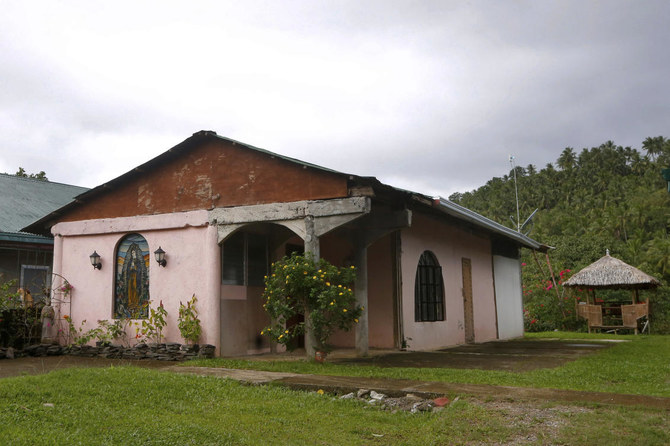
Biden is off on details of his uncle’s WWII death as he calls Trump unfit to lead the military
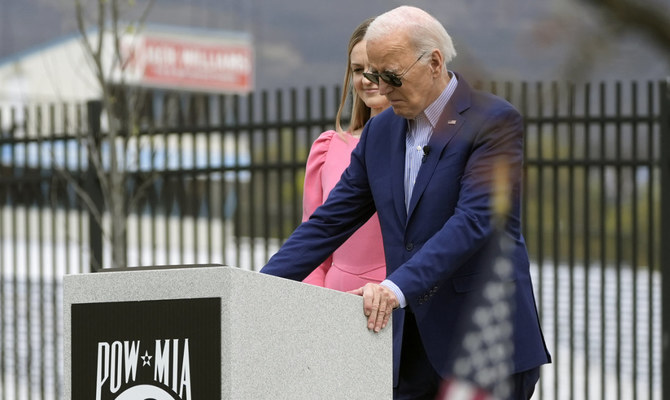
- The US government’s record of missing service members does not attribute Finnegan’s death to hostile action or indicate cannibals were any factor
WASHINGTON: President Joe Biden on Wednesday misstated key details about his uncle’s death in World War II as he honored the man’s wartime service and said Donald Trump was unworthy of serving as commander in chief.
While in Pittsburgh, Biden spoke about his uncle, 2nd Lt. Ambrose J. Finnegan Jr., aiming to draw a contrast with reports that Trump, while president, had called fallen service members “suckers” and “losers.”
Finnegan, the brother of Biden’s mother, “got shot down in New Guinea,” Biden said. The president said Finnegan’s body was never recovered and “there used to be a lot of cannibals” in the area. Biden, who also relayed a version of the story earlier in the day after stopping by the memorial in Scranton, was off on the particulars.
The US government’s record of missing service members does not attribute Finnegan’s death to hostile action or indicate cannibals were any factor.
“We have a tradition in my family my grandfather started,” said Biden, a toddler at the time of his uncle’s death in 1944. “When you visit a gravesite of a family member — it’s going to sound strange to you — but you say three Hail Marys. And that’s what I was doing at the site.”
Referring to Trump, the presumptive GOP presidential nominee, Biden said, “That man doesn’t deserve to have been the commander in chief for my son, my uncle.”
Biden’s elder son, Beau, died in 2015 of brain cancer, which the president has stated he believes was linked to his son’s yearlong deployment in Iraq, where the military used burn pits to dispose of waste.
Some former Trump officials have claimed the then-president disparaged fallen service members as “suckers” and “losers” when, they said, he did not want to travel in 2018 to a cemetery for American war dead in France. Trump denied the allegation, saying, “What animal would say such a thing?”
According to the Pentagon’s Defense POW/MIA Accounting Agency, Biden’s uncle, known by the family as “Bosie,” died on May 14, 1944, while a passenger on an Army Air Forces plane that, “for unknown reasons,” was forced to ditch in the Pacific Ocean off the northern coast of New Guinea. “Both engines failed at low altitude, and the aircraft’s nose hit the water hard,” the agency states in its listing of Finnegan. “Three men failed to emerge from the sinking wreck and were lost in the crash.”
The agency said Finnegan was a passenger on the plane when it was lost. “He has not been associated with any remains recovered from the area after the war and is still unaccounted-for,” according to the agency.
White House spokesman Andrew Bates did not address the discrepancy between the agency’s records and Biden’s account when he issued a statement on the matter.
“President Biden is proud of his uncle’s service in uniform,” Bates said, adding Finnegan ”lost his life when the military aircraft he was on crashed in the Pacific after taking off near New Guinea.”
Biden “highlighted his uncle’s story as he made the case for honoring our ‘sacred commitment ... to equip those we send to war and take care of them and their families when they come home,’ and as he reiterated that the last thing American veterans are is ‘suckers’ or ‘losers.’”
The Democratic president also misstated when uncles enlisted in the military, saying they joined “when D-Day occurred, the next day,” in June 1944, when they actually joined weeks after the Dec. 7, 1941, attack on Pearl Harbor.
After Finnegan’s death, a local newspaper published a telegram from Gen. Douglas MacArthur expressing condolences to Finnegan’s family:
“Dear Mr. Finnegan: In the death of your son, Second Lt. Ambrose J. Finnegan Jr., while in service of his country, you have my profound sympathy. Your consolation may be that he died in the uniform of our beloved country, serving in a crusade from which a better world for all will come. Very faithfully, Douglas MacArthur.”
Biden, in his 2008 book “Promises to Keep,” made only brief mention of his uncle, describing him as flyer who was killed in New Guinea.
Russian missile barrage on Ukraine city kills 17
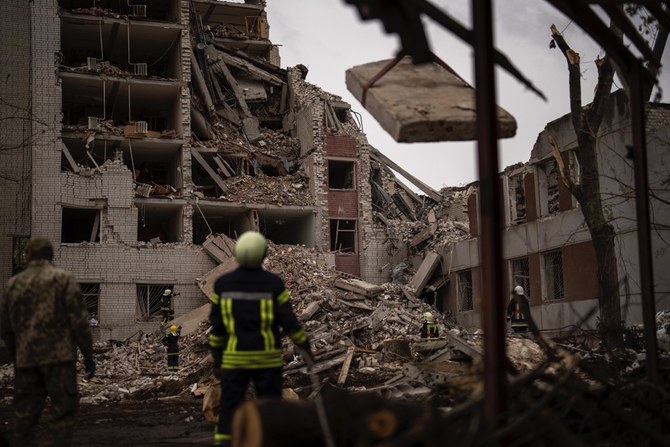
- The official death toll grew to 17 during the day, while emergency services said 60 people — including three children — had been wounded
CHERNIGIV, Ukraine: Three Russian missiles crashed into Ukraine’s historic city of Chernigiv on Wednesday, killing 17 people as officials pleaded for more air defense systems from allies.
Pools of blood gathered on the street at the scene of one strike, where rescuers searched for survivors in the rubble and carried away the wounded on stretchers, official images showed.
As President Volodymyr Zelensky appealed for more help from Western allies, the US House of Representatives finally announced a vote on a massive new military aid package that includes some $61 billion in long-delayed support for Kyiv, a move welcomed by President John Biden.
In Chernigiv, resident Olga Samoilenko told AFP how she ducked with her children into the corridor of their apartment building for protection when the first missile exploded.
“Our neighbors were already there. We started shouting for everyone to fall to the floor. They did. There were two more explosions. Then we ran to the parking lot,” the 33-year-old said.
The official death toll grew to 17 during the day, while emergency services said 60 people — including three children — had been wounded.
Mayor Oleksandr Lomako said more than a dozen buildings had been damaged in the attack while other officials said dozens of vehicles and medical and educational facilities were also damaged.
A 25-year-old policewoman on sick leave was among those killed after suffering a severe shrapnel injury, the interior minister announced.
AFP journalists at the scene saw a body being pulled from the rubble and an eight-story hotel building gutted by the strike where municipal workers were using a crane to clear debris.
Nearby apartments, a beauty salon and beer shop were among structures whose windows were blown out by the attack.
The Chernigiv region, which borders Belarus to the north, was partially occupied at the beginning of the Russian invasion but has been spared fighting for around two years since Russian forces retreated.
Zelensky blamed Russia for the attack but also said the West should do more to help defend Ukraine’s skies.
“This would not have happened if Ukraine had received sufficient air defense equipment and if the world’s determination to resist Russian terror had been sufficient,” he said.
Addressing the European Council by video link later Wednesday, Zelensky said Ukraine should enjoy the same cover from aerial attacks as Israel and pleaded for more air defense systems.
“Here in Ukraine, in our part of Europe, unfortunately, we don’t have the level of defense that we saw recently in the Middle East,” Zelensky said, according to a statement on his web site.
Zelensky was referring to the interception of Iran’s drone and missile barrage on Israel last Saturday.
“Our Ukrainian sky, the sky of our neighbors deserves the same level of defense.”
The Ukrainian president added: “All lives are equally valuable.”
In Washington, Biden applauded the planned vote in Congress on the massive new Ukraine aid package, scheduled for Saturday after months of political wrangling, and called on American lawmakers to pass it.
“I will sign this into law immediately to send a message to the world: ‘We stand with our friends, and we won’t let Iran or Russia succeed’,” he said in a White House statement.
Chernigiv lies some 145 kilometers (90 miles) north of Ukraine’s capital, Kyiv, and had a pre-war population of around 285,000 people.
The city was badly damaged when Russian tanks swept into Ukraine from Belarusian territory in February 2022 and besieged the city until April that year.
EU leaders back new Iran sanctions after attack on Israel

- EU leaders condemned the Iranian attack, reaffirmed their commitment to Israel’s security
BRUSSELS: European Union leaders decided on Wednesday to step up sanctions against Iran after Tehran’s missile and drone attack on Israel left world powers scrambling to prevent a wider conflict in the Middle East.
The summit in Brussels is the first meeting of the EU’s 27 national leaders since Saturday’s attack, more than six months into the war between Israel and the Iran-backed Palestinian militant group Hamas.
Israel has signalled that it will retaliate but has not said how. EU leaders condemned the Iranian attack, reaffirmed their commitment to Israel’s security and called on all sides to prevent more tensions, including in Lebanon.
“The European Union will take further restrictive measures against Iran, notably in relation to unmanned aerial vehicles (UAVs) and missiles,” the leaders said in a joint statement.
Italy PM Meloni visits Tunisia for migration talks
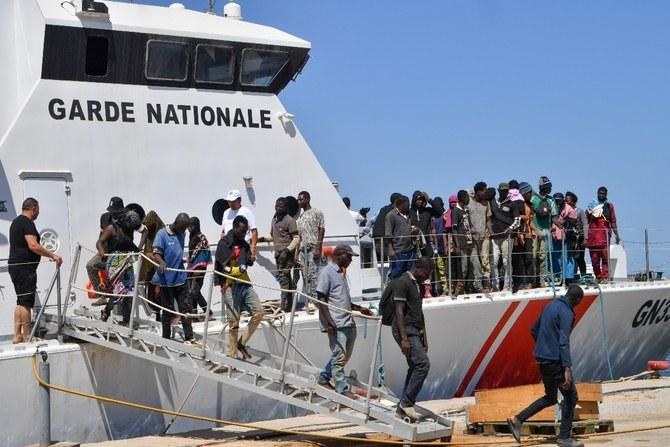
- Tunisia is a major transit point for thousands of sub-Saharan migrants hoping to reach Europe every year
TUNIS: Italian Prime Minister Giorgia Meloni met with officials in Tunis Wednesday to discuss what she called a “new approach” to irregular migration and economic cooperation with Tunisia.
The hard-right leader’s visit, the fourth in less than a year to the north African country, came as her government pledged to curb irregular migrant arrivals in Italy.
Meloni met with President Kais Saied, who said after the meeting Tunisia must not become “a country of transit or settlement” for migrants from other African countries, according to a statement from his office.
In a video address released after her discussions with Saied, Meloni also said “Tunisia cannot be a country of arrival for migrants” from the rest of Africa.
She vowed to “involve international organizations to work on repatriations” of migrants while insisting on more European investment in African nations.
Ahead of the visit, an Italian official had told AFP that “cooperation on migration remains a central aspect of the relationship between Italy and Tunisia.”
“It remains essential that Tunisian authorities continue their action to combat human trafficking and contain illegal departures,” the official added.
Meloni’s latest visit to Tunisia came as part of her so-called Mattei Plan, a program aiming to posit Italy as a key bridge between Africa and Europe.
She said the fight against irregular migration required development for African countries and investments.
“Italy will continue to try to advance this new approach which it is promoting at a European level,” she said.
But critics say the plan would funnel energy north while exchanging investment in the south for deals aimed at curbing migration.
Three agreements were signed Wednesday: a 50-million-euro ($53-million) aid for energy projects, credit for small- and medium-sized businesses, and a university cooperation agreement.
Meloni also said Italy would encourage regular migration by granting 12,000 residence permits to Tunisians trained in specific fields.
Tunisia is a major transit point for thousands of sub-Saharan migrants hoping to reach Europe every year, with Italy as a frontline for their arrivals.
Almost 70,000 migrants were intercepted trying to cross the Mediterranean from Tunisia to Italy last year, according to Tunisian authorities.
Meloni visited Tunisia three times over the summer of 2023, twice with the European Commission chief Ursula von der Leyen.
The visits resulted in the European Union’s signing of an agreement in July to provide financial aid to debt-ridden Tunisia in return for its commitment to curb migrant departures.
The agreement provided 105 million euros to curb irregular migration — which the EU has started paying — added to 150 million euros in budgetary support.
European Parliament lawmakers criticized the agreement, citing a deterioration of human rights and freedoms in the north African country.
They also criticized Saied’s increasing authoritarian rule after his sweeping power grab in 2021.
Last month, the EU signed a similar deal with Egypt worth 7.4 billion euros on energy and migration.
Google employees arrested after protesting against $1bn contract with Israel
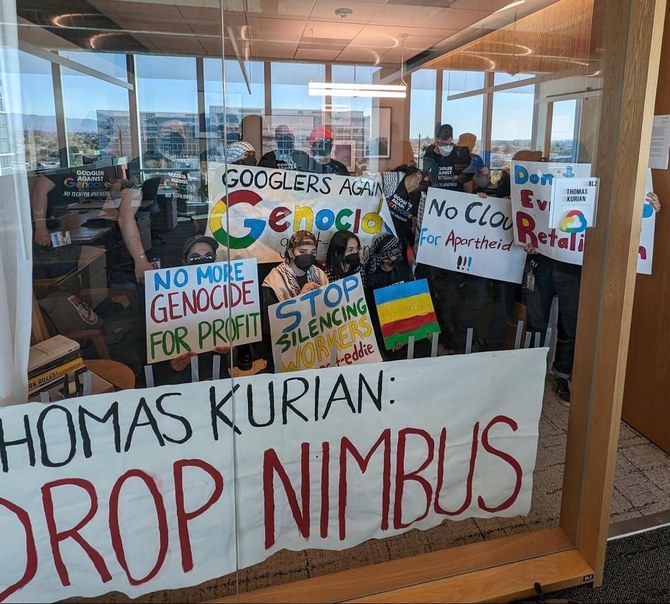
- 'Google workers do not want their labor to power Israel’s genocide of Palestinians in Gaza,' No Tech For Apartheid group said
LONDON: Several Google employees were arrested on Tuesday for taking part in a 10-hour sit-in at the company’s offices in New York and California.
The protest, organized by members of the No Tech For Apartheid movement, was meant as a challenge to the tech giant’s involvement with the Israeli government. It centered on a $1 billion cloud computing contract between Google, Amazon and the Israeli government and military, known as Project Nimbus.
The project involves creating a secure Google cloud setup in Israel to facilitate data analysis, AI training and other computing services, Time magazine reported.
According to leaked documents reported by American news organization Intercept in 2022, the project includes advanced features like AI-enabled facial detection and automated image categorization.
During the sit-in, a livestreamed video captured a security worker telling protesters at Google’s California office that they were on administrative leave and cautioned them about trespassing.
Social media videos showed police removing nine protesters from the premises. Similar actions were recorded at the company’s New York office.
A statement from the No Tech For Apartheid group said: “Google workers do not want their labor to power Israel’s genocide of Palestinians in Gaza. The time is now to rise up against Project Nimbus, in support of Palestinian liberation and join calls to end the Israeli occupation.”
Last month, a Google employee from the group interrupted a talk by the company’s Israel chief, accusing the company of “powering genocide.” He was later fired.
A Google spokesman told the Telegraph: “These protests were part of a longstanding campaign by a group of organizations and people who largely don’t work at Google. A small number of employee protesters entered and disrupted a couple of our locations.
“Physically impeding other employees’ work and preventing them from accessing our facilities is a clear violation of our policies and we will investigate and take action.
“These employees were put on administrative leave and their access to our systems was cut. After refusing multiple requests to leave the premises, law enforcement was engaged to remove them to ensure office safety.”




